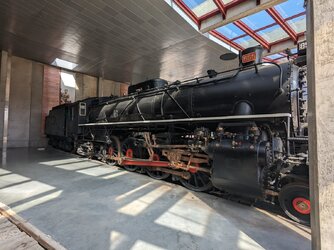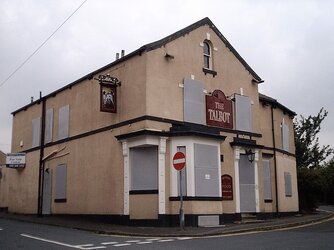Two ex-Great Western lovelies from my ride yesterday.
1) Wilmcote station just north of Stratford on Avon, retaining its classic GWR rural station look
View attachment 723922
2) some lower quadrant signalling weirdness at Droitwich. Can someone tell me what sort of signals these are?
nb. if you squint under the bridge you can just about make out another set of lower-quadrant signals.
View attachment 723923
Platform starting signals and probably advanced starter, so allowing a train to leave the station even if the line ahead is occupied so another train can stop at the stop at the station. In some cases absolute block signalling has dispensed with the platform starter and for example Beeston (Notts) westbound has, unless it's been changed on recent years, a block signal immediately before the platform that really annoyed passengers wanting to leave a train.
Last edited:



